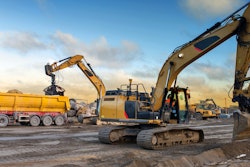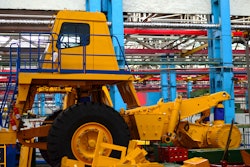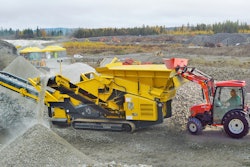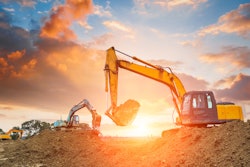
The $1.9 trillion relief package signed by President Biden on March 11 is expected to give a substantial boost to the American economy, putting more money in people's pockets just as an improving pandemic outlook opens new avenues for them to spend it.
The road building industry has been holding its breathe for financial stability since well before the pandemic and Biden's American Rescue Plan (ARP) aims to help, if only a little. In addition to addressing the public health and economic crises head on, the President’s plan provides $10 billion in emergency funding for various infrastructure-related projects.
According to the American Roads & Transportation Builders Association (ARTBA), key industry provisions in the COVID-19 relief measure include:
- $350 billion for state and local governments to use for local economic relief purposes and to offset pandemic-induced declines in tax revenue;
- $30.5 billion for public transportation agency operations to offset the foregone revenue from ridership declines and other COVID-related factors;
- $10 billion for states to use on capital projects that help enable work, education, and health monitoring; and
- $8 billion for airports to help with operating and other costs associated with airport revenue declines over the last year.
With these funds, states and localities have been given broad authority for the use of this assistance. ARTBA says this takes pressure off transportation budgets and could allow some funds to flow to infrastructure-related activities. The measure also marks what many hope will be the last relief bill, signaling a shift to economic recovery with a focus on infrastructure investment.
Infrastructure Bill Up Next?
Cedric Richmond, senior advisor to President Biden and director of the White House Office of Public Engagement, said a “hard push” is coming on an infrastructure stimulus bill now that the ARP has passed.
“President Biden knows the role infrastructure plays in this country. He knows that when we invest in roads, bridges, ports, etc., we are going to get a return on our investment,” explained Richmond – a former five-term Congressman from Louisiana. “Our goal is to finish the ARP by middle of March and then we will start infrastructure."
The extension of the current federal surface transportation authorization law, the Fixing America’s Surface Transportation (FAST) Act, expires on Sept. 30, 2021. In the new year, Congress will need to deliver on a longterm, robust surface transportation reauthorization bill and a permanent fix for the Highway Trust Fund (HTF). Despite our obvious national divide on several topics, transportation infrastructure remains one of the few areas where Congress continues to find bipartisan, common ground.
Industry associations related to the heavy equipment industry have been pushing for an infrastructure bill for some time. In addition to helping the economy and providing much needed updates to U.S. infrastructure, the increased amount of construction activity that would come from it would lead to increased equipment demand. This would help rental companies, equipment manufacturers and others related to these activities, further benefiting the economy.
With the President pushing for an infrastructure package to further stimulate the economy, optimism is high in Washington right now but conflicting lawmaker priorities could get in the way. Democrats are pushing to include green initiatives, as well as tax increases to pay for the legislation. Republicans, meanwhile, are wary of including climate-related provisions and uncomfortable with bigger tax hikes.
“From day one, President Biden has made it clear that one of his top priorities is investing in a transportation infrastructure, and he sees that as a key way of strengthening our economy, create good-paying jobs and address climate change,” Carper said during the annual Washington Briefing of the American Association of State Highway and Transportation Officials (AASHTO). "The American people are counting on us to make this happen. They don’t want to hear us talking about what needs to be done. They want us to work together and get it done.”



















